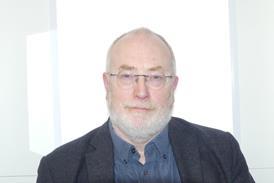The panel at a recent HSJ webinar discussed the convergence agenda; how it can be achieved, what the benefits and challenges of implementation are, and the role it plays in improving patient care
Sharing information between NHS organisations and, increasingly, their partners is key to improving care.
But how to do that is more contentious. NHS England has called on integrated care systems to support the “convergence” of electronic patient records in order to allow better flow of information between organisations.
In association with
What does that mean in a system where trusts within an ICS may use different systems, their community and primary care partners use others – and that’s before key partners like local authorities are included? And the financial situation – with capital in short supply – makes investment challenging. The call for convergence is often seen as a call for organisations to use the same EPR but could there be cheaper and potentially better ways to achieve the same goals? An HSJ webinar, in association with System C, looked at these issues.
Some areas are well advanced in creating shared records. Paul Jones, chief digital information officer at Leeds Teaching Hospitals Trust and chief information officer for the West Yorkshire Integrated Care Board, explained how Leeds had developed a shared care record which was accessible, not just to acute providers, but extended into care homes, hospices and other out-of-hospital services. “That provides a really good starting point for people to be sharing information, understanding what’s happening to patients and citizens as they go through their care journey,” he said.
But he added implementing such a system wasn’t just about technology: “I think focusing on the people, on the culture is as important, if not more than, technology.”
That point was echoed by Guy Lucchi, managing director of healthcare at System C. “From my experience, if you spend a pound on technology, we should be spending £3 on the people, process and cultural change, because that’s where the magic really sort of happens,” he said.
Oncology is one area where communication between different parts of the NHS over the management of patients is crucial. Adam Dangoor, chief clinical information officer and a consultant at University Hospitals Bristol and Weston Trust, said both UHBW and North Bristol Trust – the two acute trusts in Bristol – used the same EPR while GPs generally used EMIS and community-based services used a different system.
“The communication between those platforms is not ideal. But then we have CareFlow Connect which allows some communication between community services, such as pharmacy and pharmacists in the trust,” he said. For example, community pharmacists can communicate directly with ward pharmacists to resolve problems with prescriptions. GPs and acute trusts could also access a shared care record.
“For example, we discussed cases in our multidisciplinary team meeting yesterday. I could look into the GP record and see what were the interactions for that patient with the GP over the past few weeks or months, and that gives a much better flavour of the case, and the patient coming in,” he said. “The GPs don’t have that. So, if they’ve sent a patient in from the community onto the ward they have to wait till the discharge summary so they find out what’s going on. They can access results, blood results, and investigations. But they don’t know what’s happening day to day on the ward. And I think that’s something we’d like to look at in the future.
For me, the question around convergence is, what is the best mechanism to be able to join up information around an individual to be able to give them the best possible care?
“You need to make this information available in as frictionless way as possible, because otherwise people don’t access it, even if it’s there.”
And, as an oncologist specialising in sarcoma, he was seeing patients from outside the immediate ICS area – they came from as far away as Dorset and Cornwall – so there was a need for a way to share records from organisations outside the ICS.
Mr Lucchi pointed out the time savings that being able to access shared records offered – in his experience when working in Greater Manchester it could be 30 minutes of clinical time each day.
But he said what convergence needed was unpacking, “What are we trying to achieve from a healthcare perspective? And so, therefore, you need to look at what are the healthcare challenges we are seeing.”
These included an ageing population, increasing numbers with long-term conditions which needed monitoring and health inequalities, as well as a massive backlog for elective procedures.
“We need to move from reactive treatment of disease to much more a blend of prevention, earlier detection and treatment of disease, where healthcare outcomes are better and cheaper,” he said.
“So for me, the question around convergence is, what is the best mechanism to be able to join up information around an individual to be able to give them the best possible care?”
When convergence was talked about, there was sometimes a desire to have “one EPR to rule them all” with all organisations on the same system, he said. But this was unrealistic when organisations operated differently with different needs and would mean ripping out existing investments, he added.
“80 per cent of patient flow is between care settings and only 20 per cent of flow is between acute settings. So even if you align to the same EPR for the acute setting, you’re only solving 20 per cent of the flow problem.”
Mr Jones said that the convergence agenda had been turned into a policy of nearby acute hospitals sharing an EPR without thought about what patient benefit this delivered. “Nearly all patient flows run from primary community to your local district general hospital. It’s only when things get more serious that you end up with tertiary referral or referral to another hospital in your system,” he said.
A massive challenge for organisations will be getting investment. Mr Jones pointed out the need for investment was not just in EPRs and software. “One of the big issues we’ve got across the NHS is the infrastructure that we put all of these new systems on. The infrastructure is quite often old and legacy and has challenges, and we therefore end up making investments in nice shiny things on a foundation of sand and then people think the bright shiny things are not working very well.” There was a need to invest in maintaining core technologies such as networks, laptops, desktops and servers, he said.
Return on investment will be important in making a business case and Mr Lucchi said there was a need for realism about what was affordable and whether the projected benefits would be delivered. Mr Jones had some doubts about whether a “digitalised hospital” actually released the efficiency savings claimed – but that there could be other benefits such as improved patient safety and the ability to see more patients.
But how transformation was approached was also important, suggested Mr Lucchi. “You need top down clinical sponsorship and leadership from the board within the trust, and through that sponsorship you need to empower busy frontline staff to co-create new ways of working .”
The webinar How can ICSs navigate the EPR landscape for improved information flow, and what part does convergence play in this is now available to watch on demand.
If you had previously registered as a viewer for the event, you will be able to view the recording immediately. To access the recording, visit here and click play.
If you have not previously registered, you can do so here to get access to the recording.


























